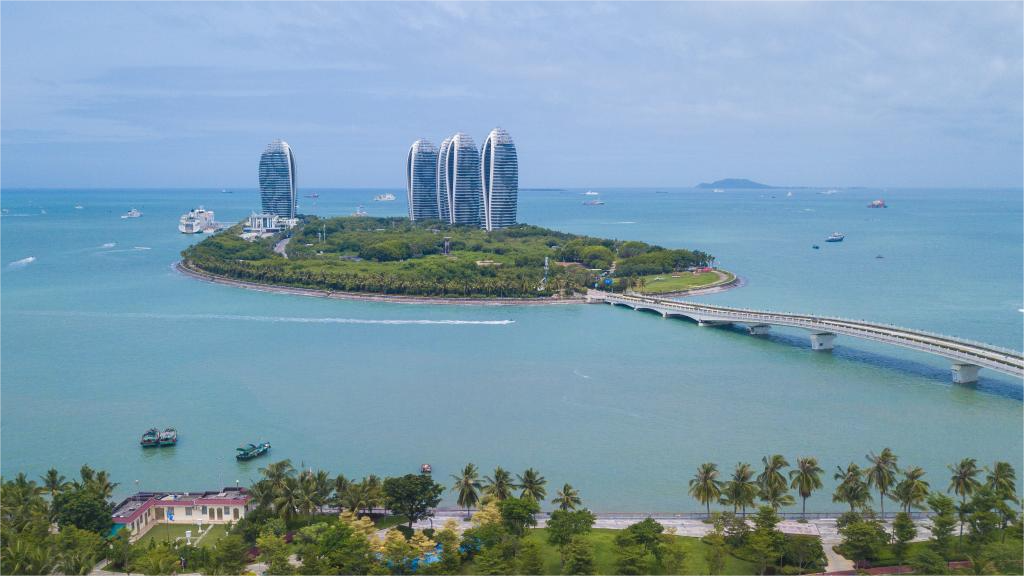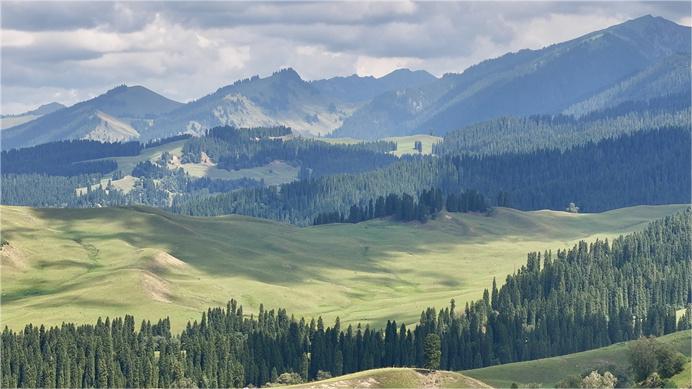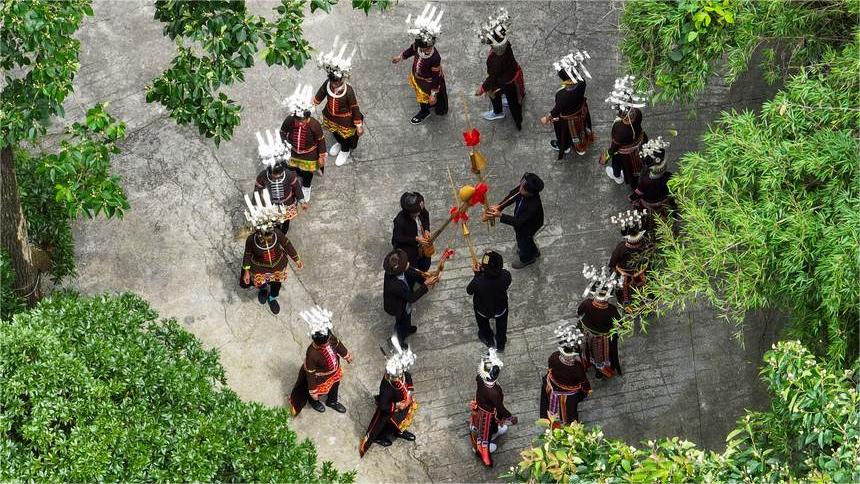Digging gold in sand, once "sea of death" now a "poetic getaway"
YINCHUAN, July 28 (Xinhua) -- To Tang Mingxi, 60, the Tengger Desert was a childhood nightmare.
"I will never forget that day, when I was on my way home from primary school, an unexpected sandstorm blew several of my classmates into a ditch and took their lives away," recalling the mishap, Tang spoke in a heavy tone.
Tang grew up in Shapotou, in the city of Zhongwei, northwest China's Ningxia Hui Autonomous Region. An endless expanse of the Tengger Desert, China's fourth-largest desert, abuts Shapotou in the north, stretching out as far as one's eyes can see.
Tang's ancestors tried hard to escape from the sand dunes, which used to approach them closer by four to five meters every year.
The year 1958 saw the inauguration of China's first desert railway, the Baotou-Lanzhou Railway. To guarantee its safe operation, anti-desertification efforts were being poured into Shapotou, and its course of development began to alter.
Thanks to the innovative "straw checkerboard barrier" approach and other afforestation measures, the Tengger Desert has been pushed back by a significant 25 km, marking a historic shift where human efforts triumphed over the encroachment of the sands. This remarkable achievement has ensured the stable operation of the railway to the present day.
Despite holding a strong desire to run away from the desert since young, Tang eventually went back after graduating from the college and began a career in sand control.
Now he is a senior forestry engineer and has participated in treating 730,000 mu (about 48,670 hectares) of desert. The vast sand, in his eyes, also turned from an enemy into a friend.
Zhongwei's success in sand control has drawn many Africans, who also suffer from encroaching sand dunes, to borrow from his experience. Also coming were some Western backpackers enticed by the mysterious desert along the ancient Silk Road.
In 1987, Tao Neng was assigned to work for the foreign affairs and tourism bureau in Zhongwei.
"There were very few domestic tourists at that time, so Zhongwei only established a tourism bureau for foreign tourists," said 62-year-old Tao.
"Back then, I could not get my mind around that the foreign guests always seemed to have a fascination with venturing deep into the desert. They would stay there for several days, enduring the scorching sun and exhausting themselves, only to return covered in dust," he said.
To figure out the mysterious charm of the desert, Tao received a half-year language training in Beijing to better communicate with these adventurers.
"They told me the desert allowed them to take a break from the overloaded urban life," he said. Although a native of Zhongwei, it was through this job that he witnessed the desert enveloped in a pink hue after rainfall and discovered oases and human settlements within the desert.
The experience of guiding a group of Hong Kong students through the desert completely reshaped his perspective. It was a May journey, led by a seasoned tour guide, the team took a camel ride deep into the heart of the sandy expanse. Around eight or nine o'clock as the evening shadows stretched, an unexpected sandstorm blew away several tents, leaving the group of ten to seek shelter in the only two tents that remained.
"I remember thinking, 'It's all over, the wages are gone, and they're bound to complain,'" Tao recounted, filled with trepidation as he led the visitors to a bathhouse for a wash the following day. To his surprise, instead, the tourists insisted on treating him to a meal -- they considered the sandstorm an unforgettable adventure that he had shared with them, a once-in-a-lifetime experience.
Ever since then, Tao has kept a journal ready for visitors to take notes of their impressions of their desert journeys. The array of imaginative insights from these travelers has been a wellspring of inspiration for him and played a pivotal role in establishing the Shapotou scenic area, which has since gained nationwide recognition and acclaim.
As the Chinese people's living standards continue to rise, Shapotou began greeting an influx of domestic tourists. In 2004, when Zhongwei was upgraded from a county to a city, the local government placed a high emphasis on the development of the tourism industry. Tao was transferred to work at the Shapotou scenic area.
After visiting multiple popular desert tourism destinations in Inner Mongolia, Gansu, and even Arab countries, he introduced a variety of activities such as sand sliding, desert surfing, and ziplining above the Yellow River to the area and also supported catering services.
In 2007, the Shapotou scenic area was designated as a national 5A-level scenic spot, attracting nearly 600,000 visitors that year.
According to Guo Jiachen, the regional manager of the scenic area's sales department, the infrastructure and service quality has been continuously improving over the years, and its influence has been expanding year by year. In 2023, the scenic area received more than 1.27 million visitors and in the first half of this year, the number had already approached 600,000, an increase of 10 percent compared to the same period last year.
Liu Shengjun, a 60-year-old villager from Jiadao Village, started his venture in the tourism market in 2010. Seeing the potential in the tourism industry, the seasoned farmer borrowed over 10,000 yuan (about 1,403 U.S. dollars) and purchased six camels.
"I made 100,000 yuan that very year," he recalls. These days during the summer vacation, the peak season, Liu has to lead camel rides eight or nine times a day, and during the May Day and National Day holidays, he makes as many as 18 trips a day.
"In the past, when the sandstorms were frequent, we couldn't even eat our meals outside. Now the ecology has improved, and there are more tourists. I feel very lucky to have been born in Zhongwei, and I'm very happy," he said.
Shapotou's rising fame has also boosted the cultural and tourism industry of surrounding areas. Data shows that the number of tourism industry practitioners in Zhongwei has grown from 40,000 in 2014 to 70,000 nowadays.
More services and facilities targeting the young generation are also being promoted. This year, a glamping camp with over 1,000 well-facilitated tents was put into operation, coupled with a range of art, music and gourmet festivals.
Suji Yellow River, a cluster of China's leading luxury guesthouses, has become a hit on China's social media for preserving the architectural style of the original villages while implanting the fashionable and modern vacation lifestyle into the countryside.
"Seeing the children revel in the sand and splashing in the water brings us immense joy. The tranquility of the desert offers a serene escape from the hustle and bustle," said Yang Sha, a 39-year-old visitor from Sichuan.
"To lie on a sofa at night, gazing at the vast, starry sky, is an experience of relaxation that is truly hard to come by. I was pleasantly surprised to find such an array of delectable cuisine and exceptional amenities in the midst of the desert. It far exceeded our expectations," she added.
Over the past four decades, Tao has been a witness to China's burgeoning tourism sector. He has noticed that the majestic landscapes of the western regions offer a stark contrast to the clamor of city life, drawing an increasing number of visitors seeking solace in nature and a reprieve from the urban rush. This, he identifies, is the new frontier in cultural and tourism trends.
"The cultural and tourism sector in the western region, however, is still in need of refinement. It's time for a shift in approach," Tao noted. "While our focus was once on creating uniform and standardized experiences, the preferences of the younger consumers have pivoted towards seeking out unique and tailored offerings. The aspirations of travelers have advanced beyond mere sightseeing and cursory experiences, transitioning into a phase where they seek profound immersion and leisurely vacations."
Photos
Related Stories
Copyright © 2024 People's Daily Online. All Rights Reserved.









